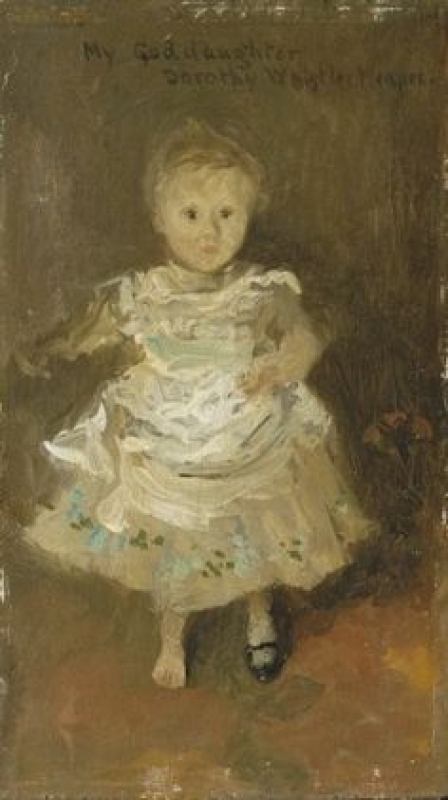Note in Flesh Colour and Grey: Portrait of Miss Dorothy Menpes dates from 1884 or 1885.
She was born on 14 September 1883, and the portrait shows her as a toddler, indicating an age of between one and two years old.
The portrait was exhibited in the Winter Exhibition, Society of British Artists, London, 1885 (cat. no. 231). 1
Last updated: 29th April 2021 by Margaret






